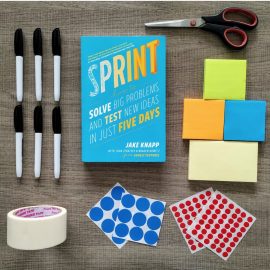

This article is an excerpt from the Shortform book guide to "Playing To Win" by AG Lafley. Shortform has the world's best summaries and analyses of books you should be reading.
Like this article? Sign up for a free trial here .
What are company capabilities? How do you build company capabilities?
Company capabilities are the resources and competencies a company needs to succeed better than its competitors. You build core business capabilities through customer research, innovation, branding, and an effective product-to-consumer strategy.
Read more about how to build company capabilities that are vital for marketplace success.
Building Company Capabilities
Question 4: What company capabilities do you need to win?
Once you’ve decided where you’re going to play and what your strategy is to succeed in that arena, figure out what resources you need to achieve victory. Find out what your company is good at and where your company needs to build capacity. For example, maybe your product development team is ready to achieve victory but your sales team is not. Also, find out where you can differentiate yourself from your competitors.
Capabilities
Company capabilities are the resources and competencies required to find your market and succeed in it. To succeed, find out where your capabilities outpace or fall short of your competitors’—for instance, the company should figure out if their sales team or their product development team specifically can succeed better than their competitors.
Note: Not every “capability” has to provide a competitive edge. It’s important to be good at manufacturing, but your company doesn’t need to be the best at manufacturing to be successful. Rather, it has to understand its consumer base the best and it has to innovate off of that information.
There are five company capabilities that are essential to success:
- Knowing and understanding the customer: You need to know what the prospective customer needs—more so than your competitors do.
- Innovating: Successful companies change in response to their deep understanding of the customer. Don’t rest on your laurels—improve your products even if things are going well.
- Creating a strong brand: You need a marketing strategy that will help customers easily recognize who you are and that will build their trust in you.
- Being able to maneuver, or “go-to-market,” quickly: This is the ability to get your innovations in the hands of customers quickly by building good relationships along your distribution line.
- Scaling up: In order to scale successfully—leading to better margins—you need to understand the global market.
P&G asked their employees what company-wide capabilities they had that allowed them to maintain a competitive advantage. They came up with five:
- The customer is king: P&G knows its consumers well and is able to serve them by creating unique solutions.
- Launching brands: P&G has a lot of institutional experience at launching and building up new brands.
- Innovation: P&G has long been on the cutting edge, and it employs huge teams of scientists who are able to keep them there.
- Engaging other companies: P&G is willing to partner with other good companies to assure mutual victory.
- Building global brands: P&G can take brands global very quickly and capably because they’re a large company and have the infrastructure already in place to do so.
Once you know your own company capabilities, build plans to achieve a competitive advantage using the strengths that you do have. If you don’t have the capabilities yet to fulfill your goals, work on building them up.
Also, ask yourself how feasible your victory goals are: How many new capabilities would you need to build, and how many exist already? Rather than building new capabilities, it’s often best to work with the capabilities you already have and change your playing field and strategy to match.
Also, consider if the system of company capabilities you’ve built is unique. If you have a unique arena and way to win, but your capabilities look exactly like your competitor’s, your competitor can see the success you’re having and easily copy it. However, unique capabilities are harder for your competitors to copy, since they require significant time, effort, and capital. It’s not feasible for every capability to be unique, but some of your system should be.
Building an Activity System
One way to determine which company capabilities you need to succeed is to build a map called an “activity system.” An activity system explains where you are playing, how you plan to win, and what capabilities you need to succeed. Also, figure out what activities will support the capabilities that you want, and add those to the map.
For example, if you’re selling cars in Russia, one of the capabilities that would help you is a degree of support from the Russian government for your project. So an activity that you need to complete is building contacts in the commerce sector of the Russian government. If this isn’t feasible, then you might not be playing on the right playing field.

———End of Preview———
Like what you just read? Read the rest of the world's best book summary and analysis of AG Lafley's "Playing To Win" at Shortform .
Here's what you'll find in our full Playing To Win summary :
- Why the cascade strategy will help you become victorious in your chosen field of play
- Why you should make every choice with the purpose of not just competing, but winning
- How to develop a system of decision-making for your company






